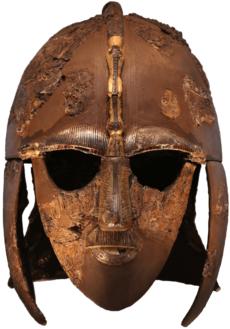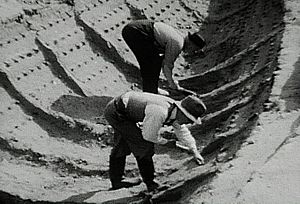Charles Phillips (archaeologist) facts for kids
Quick facts for kids
Charles Phillips
|
|
|---|---|
| Born |
Charles William Phillips
24 April 1901 England
|
| Died | 23 September 1985 (aged 84) |
| Nationality | British |
| Known for | Leader of the Sutton Hoo ship-burial excavation, 1939 |
| Spouse(s) | Margaret Mann Phillips |
| Awards | Victoria Medal, 1967 |
| Scientific career | |
| Fields | Archaeology |
Charles William Phillips (born April 24, 1901 – died September 23, 1985) was a British archaeologist. He is most famous for leading the 1939 dig at Sutton Hoo. This dig uncovered an amazing Anglo-Saxon ship burial, filled with ancient treasures.
After World War II, in 1946, he became the Archaeology Officer for the Ordnance Survey. This group makes detailed maps. In 1967, he received the Victoria Medal. This award was for his work mapping and understanding early British sites.
Contents
Early Life and Education
Charles Phillips was born on April 24, 1901. His parents were Harold and Mary Elizabeth. He was the oldest of three children. His father passed away when Charles was young.
Charles went to Henley Grammar School. Later, he attended Littlehampton Commercial School. He then studied at the Royal Masonic School for Boys. During his time there, he even helped with farm work near Stonehenge after World War I. This was because there weren't enough workers. He also explored Burgh Castle and collected old Roman pottery.
After school, Charles went to Selwyn College, Cambridge. He studied history there. He did very well in his studies.
A Career in Archaeology
In 1929, Charles Phillips became the librarian at Selwyn College. He also taught history students there. He was made a Fellow of the college in 1933.
During the Second World War, he took a break from his college work. He joined the Royal Air Force. After the war, he left his college roles in 1947.
Around 1946, Charles was chosen for an important job. He became the archaeology officer for the Ordnance Survey. This meant he helped map and record ancient sites across Britain. He worked in this role until he retired in 1965.
Exploring Ancient Britain
Charles Phillips did a lot of important work in Lincolnshire. This area had not been studied much by archaeologists before. He recorded all the ancient discoveries there. He also surveyed many long barrows, which are old burial mounds.
His work led to an important dig at the Skendleby long barrow. He published his findings in 1936. He also helped edit a book called Roman Fenland in 1970. This book was about Roman sites in the Fens.
The Sutton Hoo Discovery
Charles Phillips led the dig at Sutton Hoo. This famous ship-burial is thought to be the grave of an Anglo-Saxon king, Rædwald of East Anglia. The excavation took place from July 10 to August 25, 1939.
Before Phillips arrived, another archaeologist named Basil Brown had started digging. Brown found signs of a very large ship buried in the ground. When Charles Phillips visited the site, he knew it was a huge discovery. He said it "could be the ship of a King."
Because of his experience, Charles Phillips was put in charge of the Sutton Hoo dig. He arrived on July 8 and started work two days later. His leadership helped uncover one of Britain's most important archaeological finds.

Serving in Wartime
During the Second World War, Charles Phillips served in the Royal Air Force. He worked in units that looked at aerial photographs. This helped the military understand what was happening on the ground. He was able to use his sharp eye for detail in a new way. He was given the rank of Flight Lieutenant.
Awards and Recognition
In 1967, Charles Phillips received the Victoria Medal. This award from the Royal Geographical Society recognized his important work. It honored his efforts in mapping and understanding ancient British landscapes. He was also a Fellow of the Society of Antiquaries of London (FSA). This means he was a respected member of a group dedicated to studying ancient things.
Personal Life
On July 3, 1940, Charles Phillips married Margaret Mann Phillips. She was also a scholar. They had a son and a daughter together.
Charles Phillips in Film
In the 2021 movie The Dig, Charles Phillips was played by actor Ken Stott. The film tells the story of the exciting Sutton Hoo excavations.


